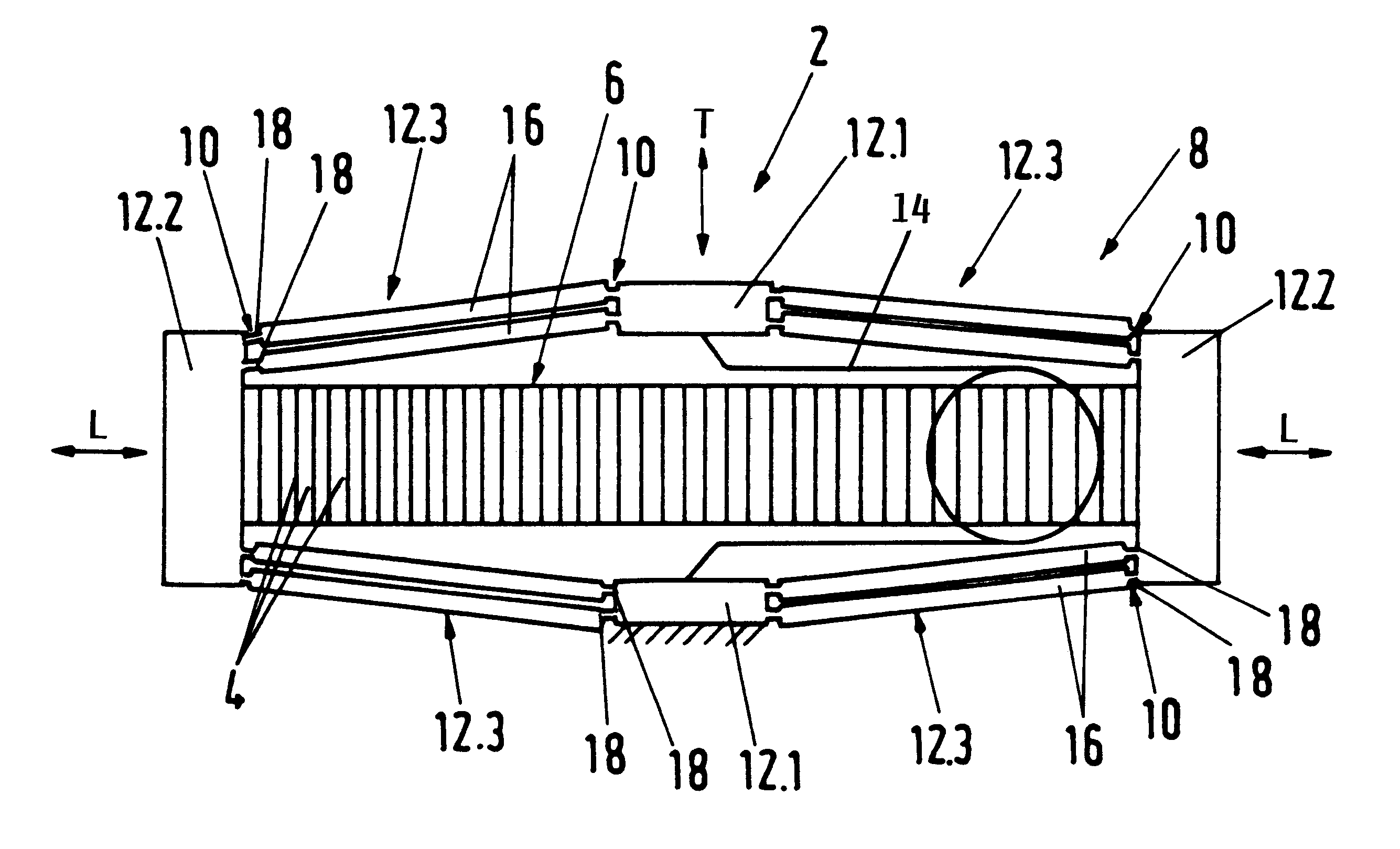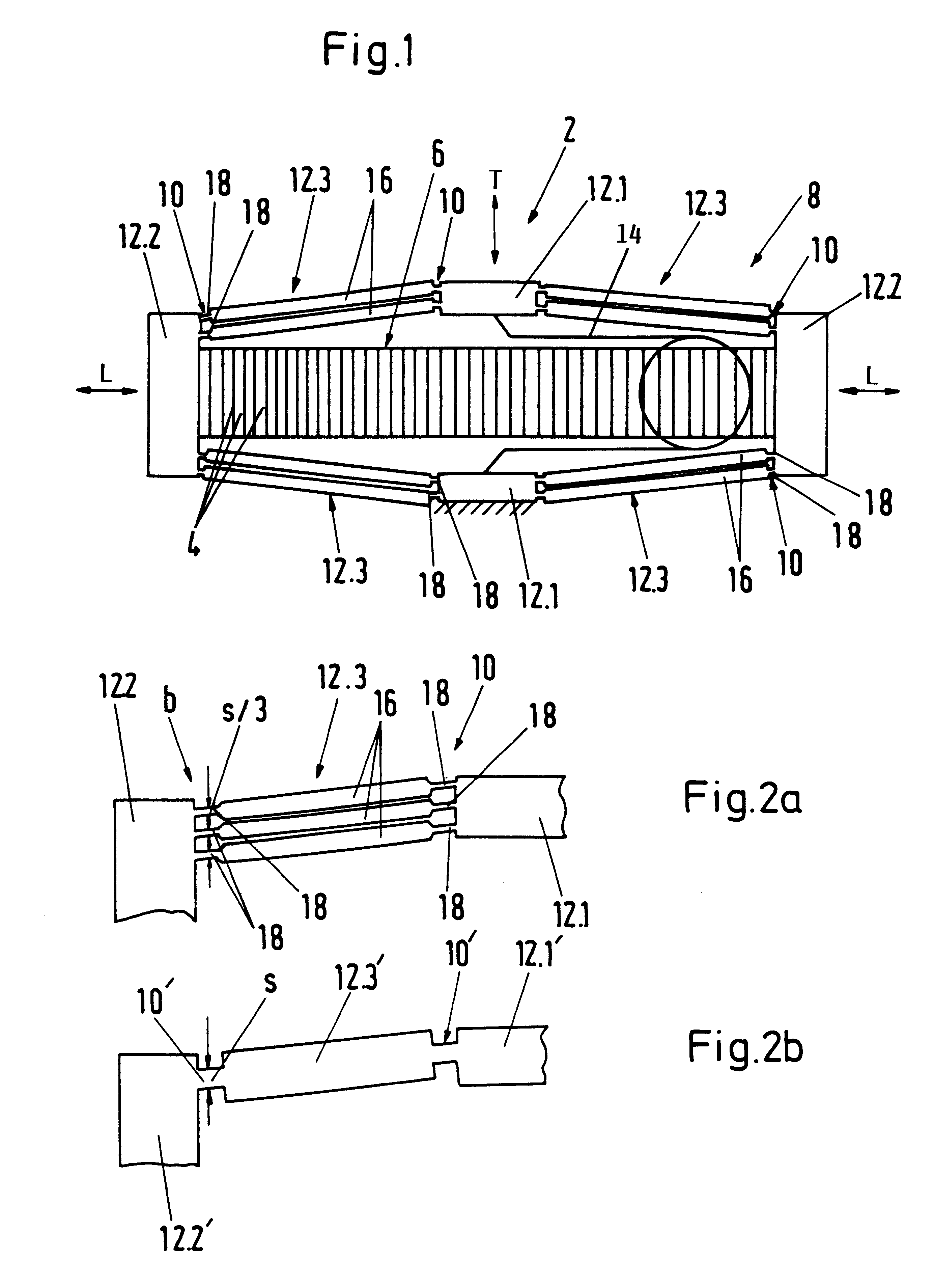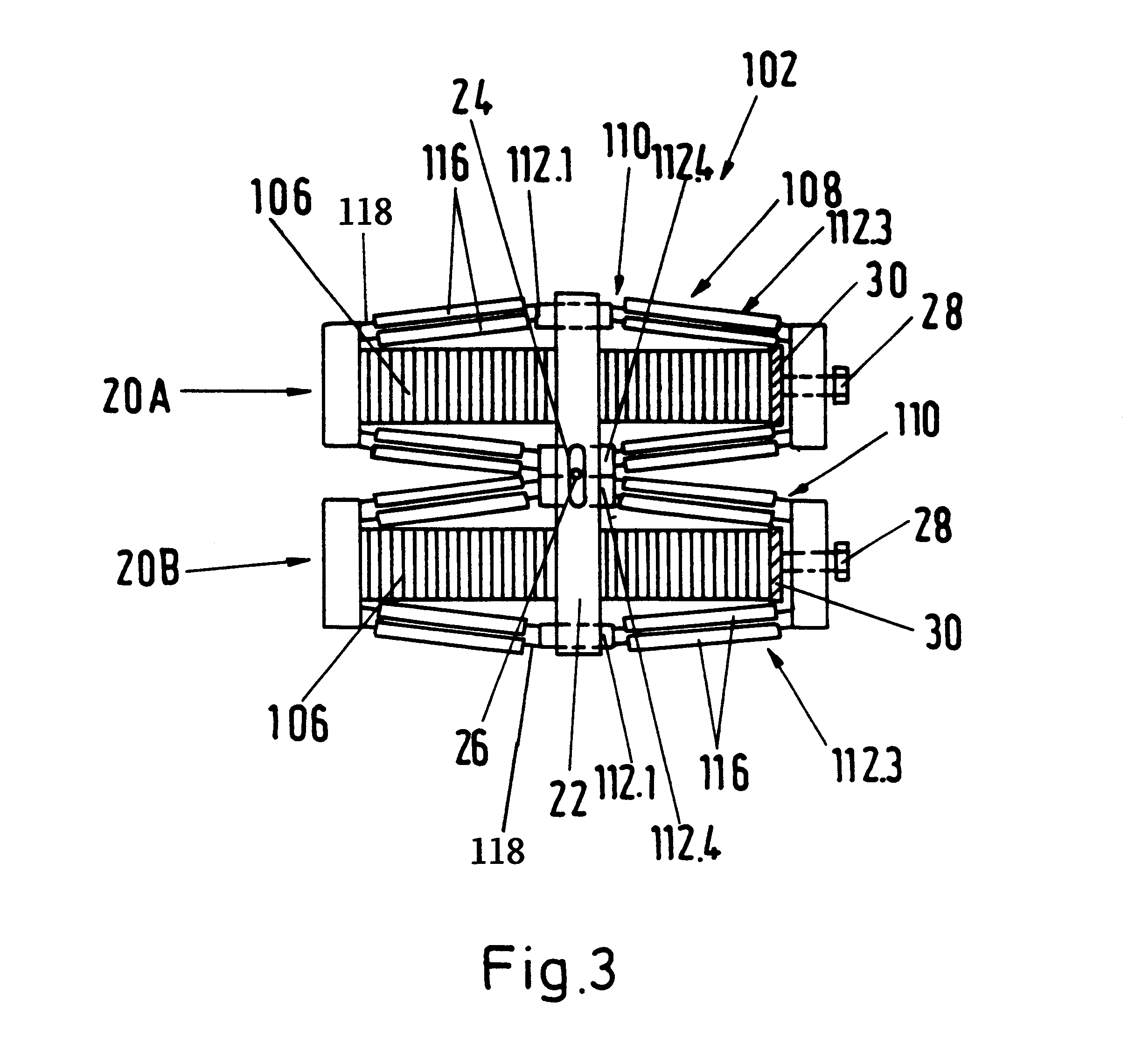Electrostrictive or piezoelectric actuator device with a stroke amplifying transmission mechanism
a transmission mechanism and actuator technology, applied in piezoelectric/electrostrictive devices, piezoelectric/electrostrictive devices, device details, etc., can solve the problems of increasing the material of the hinge due to the bending movement, the stiffness of the bending hinge, and the insufficient multiplication of displacement achieved by such an electrostrictive or piezoelectric stack element for many applications
- Summary
- Abstract
- Description
- Claims
- Application Information
AI Technical Summary
Benefits of technology
Problems solved by technology
Method used
Image
Examples
Embodiment Construction
The solid state actuator device 2 shown in FIG. 1 comprises an electrically strainable solid state actuator element 6 and a transmission mechanism 8 in the form of an octagonal rod linkage frame that surrounds the actuator element 6. The actuator element 6 comprises a laminated stack of layers 4 of an electrically strainable solid state material, which is preferably a piezoelectric material but may alternatively be an electrostrictive material. The transmission mechanism 8 comprises rigid frame members 12 that are respectively connected to each other by elastically flexible joints 10.
The frame members 12 include four unitary frame members 12.1 and 12.2, alternatingly arranged with four divided frame members 12.3 to form the sides of the octagon. The four unitary frame members include two actuator element end block members 12.2 arranged at the lengthwise ends of the actuator element 6, and two output members 12.1 arranged laterally to the sides of the actuator element 6 on a plane be...
PUM
 Login to View More
Login to View More Abstract
Description
Claims
Application Information
 Login to View More
Login to View More - R&D
- Intellectual Property
- Life Sciences
- Materials
- Tech Scout
- Unparalleled Data Quality
- Higher Quality Content
- 60% Fewer Hallucinations
Browse by: Latest US Patents, China's latest patents, Technical Efficacy Thesaurus, Application Domain, Technology Topic, Popular Technical Reports.
© 2025 PatSnap. All rights reserved.Legal|Privacy policy|Modern Slavery Act Transparency Statement|Sitemap|About US| Contact US: help@patsnap.com



